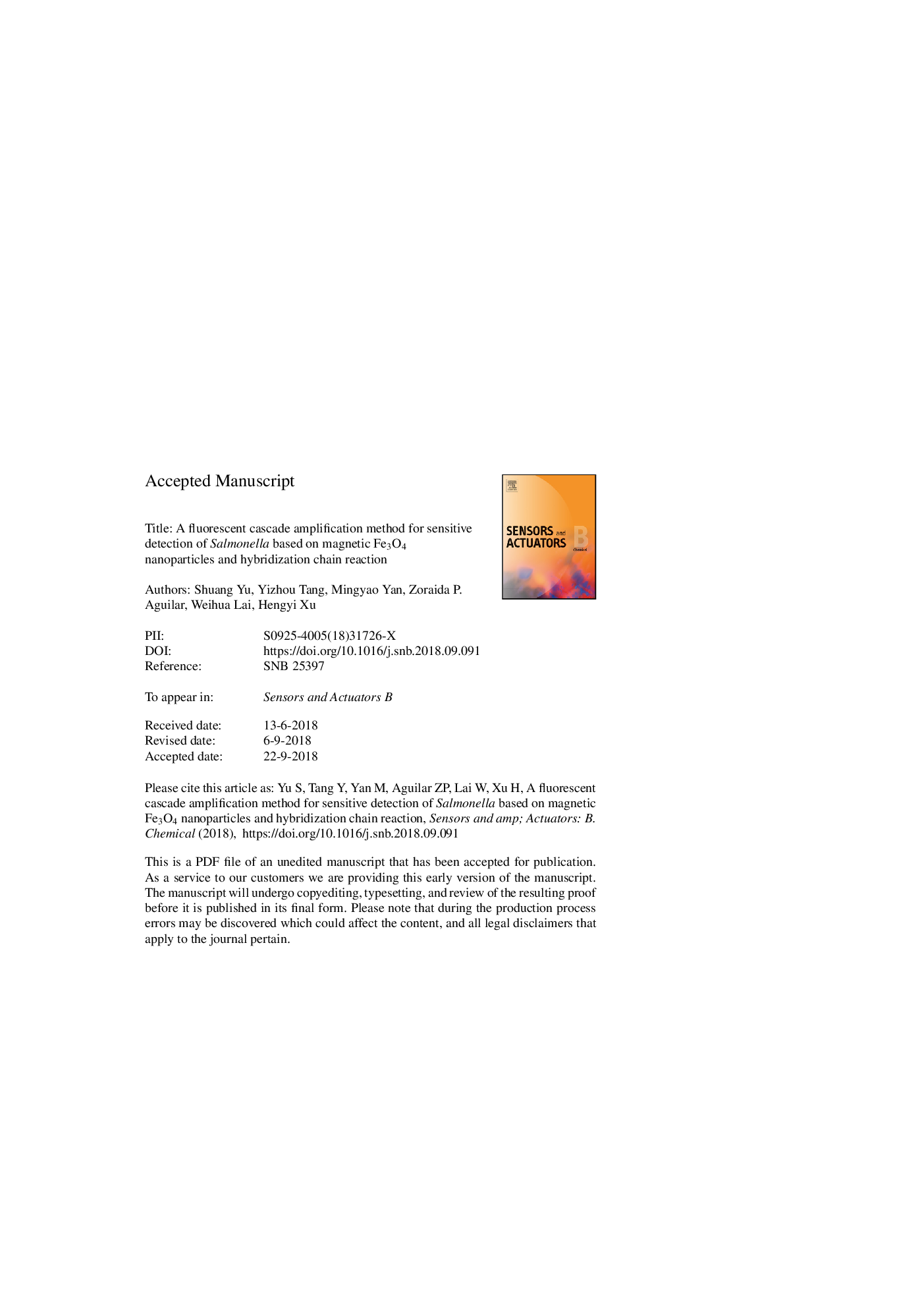| کد مقاله | کد نشریه | سال انتشار | مقاله انگلیسی | نسخه تمام متن |
|---|---|---|---|---|
| 11016341 | 1777900 | 2019 | 35 صفحه PDF | دانلود رایگان |
عنوان انگلیسی مقاله ISI
A fluorescent cascade amplification method for sensitive detection of Salmonella based on magnetic Fe3O4 nanoparticles and hybridization chain reaction
دانلود مقاله + سفارش ترجمه
دانلود مقاله ISI انگلیسی
رایگان برای ایرانیان
کلمات کلیدی
موضوعات مرتبط
مهندسی و علوم پایه
شیمی
شیمی آنالیزی یا شیمی تجزیه
پیش نمایش صفحه اول مقاله

چکیده انگلیسی
We developed a fluorescence sensor based on hybridization chain reaction (HCR) and Fe3O4 nanoparticles for the detection of Salmonella, common pathogen related to numerous food poisoning outbreaks. In this study, a pair of specific primers based on invA of Salmonella was designed and used in asymmetric polymerase chain reaction (aPCR) to produce a long target single-stranded DNA (ssDNA) that was captured by biotin-probe labeled magnetic beads (MBs) forming the MBs-ssDNA. The target ssDNA triggered HCR amplification with the two carboxyfluorescein (FAM) labeled DNA hairpin reporter probes (H1-FAM, H2-FAM) that enabled the measurements of the fluorescence intensities from the resulting ssDNAâ¼(H1-FAM â¼H2-FAM)n. The Fe3O4 nanoparticles were used to isolate the target ssDNA which hybridized with the reporter probes and led to decreased background signal that resulted in a detection limit of 7.4âÃâ101âCFU/mL in buffer and 6.9âÃâ102âCFU/g in spiked lettuce. The method developed also showed excellent selectivity over several common foodborne pathogens. The Fe3O4 nanoparticles capture coupled with fluorescence detection sensor showed promise for the detection of Salmonella.
ناشر
Database: Elsevier - ScienceDirect (ساینس دایرکت)
Journal: Sensors and Actuators B: Chemical - Volume 279, 15 January 2019, Pages 31-37
Journal: Sensors and Actuators B: Chemical - Volume 279, 15 January 2019, Pages 31-37
نویسندگان
Shuang Yu, Yizhou Tang, Mingyao Yan, Zoraida P. Aguilar, Weihua Lai, Hengyi Xu,